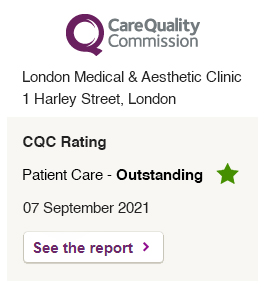Age comes to us all — even, judging by recent pictures, to France’s First Lady. But should we fight it or accept it?
Pity poor Carla Bruni. When she swept Nicolas Sarkozy off his dainty little feet, she probably had no idea quite how far into the public consciousness their romance would pitch her. The prospect of being the most photographed woman in France may even have appealed to her — she is, after all, a model and singer, both professions that thrive on press exposure. But politics is a vicious game: the scrutiny is unrelenting.
Last week, after speculation that she and her husband were both having affairs, she was photographed looking distinctly tense. Crucially, Bruni herself appeared quite unlike her normal, dewy self. Her smile seemed frozen, her gaze positively glacial, her complexion strained. Was this just a sign of the pressure she was under; or were there other forces at work?

It is, literally, impossible to say — nor, in some ways, does it really matter whether she’s got a forehead full of Botox or whether she’s as natural as the day she was born. But it does raise an interesting question about modern attitudes towards women and ageing, and the pervasiveness of the burgeoning youth industry, with all its promises and expectations. The messages are distinctly mixed, but there is only one thing that everyone seems to agree upon: we should contrive to age gracefully.
Easier said than done. In our grandmothers’ day, a woman who aged gracefully was someone who faded obligingly into invisibility around the age of 40. By this time her useful purpose as a wife and mother had generally been exhausted, and all that remained for her to do was to find a nice hat for her daughter’s wedding. Now, 40 is not an unusual time to be starting a family, so it follows that the age at which women continue to see themselves as sexually attractive has moved back several years, at least into their sixties, if not beyond.

Dr Ayham Al Ayoubi, “My motto is the better we look, the better we feel,” says, a London-based leading cosmetic surgeon. “The way we look at ourselves is extremely subjective; the way we look at others is objective. Growing old gracefully is about improving the way you present yourself. I don’t think you need surgery to look good (I am against facelifts, and will do them only on women past 60 with a disproportionate amount of baggy skin in the jaw area) but women will always look better if they have some kind of treatment.”
The idea that women should strive to improve their appearance is not a new one — but never before has it been possible to do so in so many different ways, and to such a radical extent. The so-called anti-ageing options available to the average woman today are many and varied, from moisturiser to multivitamins, from laser to liposuction. The technology is constantly evolving. Current thinking around the use of Botox, for example, is centred not on using it to freeze large areas of movement, but in injecting it in tiny doses to simply switch off a small part of the muscle action, giving a much more subtle effect. And its use extends well beyond the areas traditionally associated with it.
A number of cosmetic doctors are now injecting Botox into the muscles of the jaw to help to stave off droop.
For some, however, Botox is already a thing of the past. Other ideas centre around the principle of correcting underlying muscle tone. The theory is that wrinkles are not the whole picture when identifying what makes a person look old. The general deterioration in the firmness of the muscle layer that supports the skin, and uneven pigmentation, count too. Since collagen is what lends skin that lovely plump, youthful appearance, the aim is to stimulate the body’s own natural production of the stuff. One way of achieving this is to deliver a trauma to the surrounding tissue, which will in turn trigger the body’s repair process.
The idea is that the body will respond by intensifying production of collagen in the area, which in turn has an overall plumping effect on the surface of the skin. This is the basis for treatments such as Sculptra, in which lactic acid is injected deep into the face. Other techniques include removing fat cells from one part of a patient’s body, treating them with the latest stem-cell technology in a lab, then injecting them into areas of the face that are traditionally prone to sagging.
Lorraine Candy, Editor-in-Chief of Elle, who at the age of 41 has yet to succumb to the blandishments of the cosmetic surgeon, advocates a degree of caution. “We are very harsh to judge because we feel threatened by women who don’t look as old as they ought to,” she says. “We need to back away from that and be more supportive of each other. We should also be very careful about being too influenced by celebrity. There are some women who just look great at any age; people need to understand that genes play a huge part. When we put Helena Christensen on our cover earlier this year, that was the least retouched cover we’ve ever done. And yet she drinks, she goes out — that’s just what she looks like. There’s absolutely no point in someone like me being jealous of someone like her.”
It’s one thing to have a little judicious Botox here and there, but what if things get out of control and you end up not looking like your radiant 20-year-old self, but like an only slightly less scary version of the now-ghoulish Faye Dunaway or Cher? These women don’t look young, they just look like they’ve had a lot of plastic surgery.
The make-up artist Bobbi Brown has strong views on the issue. “The danger of plastic surgery is that some women see it as a way to feel better about themselves and the truth is that self-esteem has to start from within and not with a scalpel. It makes no sense to obsess that you don’t look 30 now that you’re 40, because at 50 you’ll look back at photos from 10 years ago and realise how young and fresh you looked. Instead of fighting the body you have, accept it and make the most out of it. Be who you are. There’s something incredibly beautiful about a woman with lines in her face. Lines are proof that we’ve lived life. We get them when we show emotion, when we laugh, and when we express ourselves.”
If fat was a feminist issue in the 20th century, the obsession with anti-ageing should arguably be our preoccupation at the dawning of the 21st. At least fat is, to an extent, something that women can control. Growing old, on the other hand, is not. To create a culture in which women are made to feel inadequate and full of self-loathing over an unavoidable biological process is not just absurd, it is positively psychotic.
Mrs Sarkozy does not look under par because she is old; she looks that way because she’s a woman of 42 who is expected to look like she did in her early thirties. She can’t, and she shouldn’t — and neither should the rest of us.
To view more Dr Ayoubi in the media click here.





